The 1942 nickel’s value depends heavily on condition and mint mark. Circulated coins are worth only slightly above face value, while uncirculated examples range from $3 to $15 or more. The key identifier is the mint mark on the reverse: no mint mark indicates a standard composition coin without silver. A large “P” mint mark signifies a valuable Type 2 silver “war nickel” worth significantly more, while a small “D” denotes Denver mintage. Only nickels with the large “P” mint mark contain silver, as the wartime composition change occurred mid-year in 1942. Condition remains the primary value factor for standard versions.
The 1942 Jefferson nickel represents a fascinating transition year in American coinage history. During this single year, the U.S. Mint produced both traditional copper-nickel compositions and introduced the famous wartime silver alloy. Understanding the differences between mint marks and variations can mean the difference between a 5-cent piece and a coin worth hundreds of dollars. This guide breaks down exactly what your 1942 nickel is worth based on its specific characteristics.
Understanding the Two Types of 1942 Nickels
The 1942 nickel year is unique because the Philadelphia Mint produced two entirely different compositions. From January through October, the mint struck standard copper-nickel (75% copper, 25% nickel) Jefferson nickels with no mint mark on the reverse. Starting in late October 1942, production shifted to the wartime silver composition containing 56% copper, 35% silver, and 9% manganese.
The easiest way to identify which type you have is by examining the reverse above Monticello. Type 1 nickels (copper-nickel) have no mint mark at all. Type 2 nickels (silver wartime) feature a large mint mark above the dome of Monticello—either a prominent “P” for Philadelphia, “D” for Denver, or “S” for San Francisco. This was the first time in U.S. history that the Philadelphia Mint used a mint mark on circulating coins.
The Philadelphia Mint struck 49,789,000 Type 1 copper-nickel nickels without mint marks before the composition change. After October 1942, they produced 57,873,000 silver nickels bearing the large “P” mint mark. This dual production creates specific value categories that collectors need to understand.
1942 No Mint Mark Nickel Value (Type 1 Copper-Nickel)
The standard 1942 Jefferson nickel without a mint mark contains no silver and follows traditional copper-nickel composition. In circulated condition, these coins typically trade for face value to modest premiums depending on wear.
Current Market Values by Grade:
| Grade | Condition | Approximate Value |
|---|---|---|
| Good (G-4) | Heavy wear, details visible | $0.10 – $0.25 |
| Fine (F-12) | Moderate wear | $0.25 – $0.50 |
| Extremely Fine (EF-40) | Light wear on high points | $0.75 – $1.50 |
| About Uncirculated (AU-50) | Slight wear, most luster | $2.00 – $3.50 |
| Mint State (MS-60) | No wear, contact marks | $3.00 – $5.00 |
| Mint State (MS-63) | Better strike, fewer marks | $6.00 – $10.00 |
| Mint State (MS-65) | Exceptional quality | $15.00 – $25.00 |
| Mint State (MS-67) | Premium gem quality | $75.00 – $150.00 |
Heritage Auctions reported a 1942 No Mint Mark nickel graded MS-67 by PCGS sold for $132 in January 2023. Another MS-66+ specimen achieved $96 at auction in late 2022. These premium prices reflect the difficulty of finding early-year Philadelphia nickels in true gem condition since most circulated heavily during World War II.
1942-D Nickel Value
The Denver Mint produced two varieties in 1942. The Type 1 copper-nickel 1942-D (small “D” mint mark to the right of Monticello) had a mintage of 13,938,000 coins. The Type 2 silver 1942-D (large “D” above Monticello) produced 32,900,000 pieces.
1942-D Type 1 (Copper-Nickel, Small D):
| Grade | Value Range |
|---|---|
| Good to Fine | $0.15 – $0.75 |
| EF-40 | $1.25 – $2.50 |
| AU-50 | $3.00 – $5.00 |
| MS-63 | $8.00 – $15.00 |
| MS-65 | $25.00 – $45.00 |
| MS-67 | $200.00 – $400.00 |
1942-D Type 2 (Silver Wartime, Large D):
The silver content alone (0.05626 troy ounces) provides a melt value of approximately $1.25-$1.50 at current silver prices around $24 per ounce.
| Grade | Value Range |
|---|---|
| Good to Fine | $1.50 – $2.00 |
| EF-40 | $2.50 – $3.50 |
| AU-50 | $3.50 – $5.00 |
| MS-63 | $8.00 – $12.00 |
| MS-65 | $20.00 – $35.00 |
| MS-67 | $150.00 – $275.00 |
A 1942-D Type 2 silver nickel in MS-67 condition sold for $264 through Stack’s Bowers in March 2023. The Type 1 copper-nickel version in MS-67 commanded $336 at Heritage Auctions in 2022, reflecting its lower mintage and collectibility.
1942-S Nickel Value
San Francisco only produced the silver wartime composition in 1942, beginning production in December. The 1942-S had a mintage of 32,900,000 pieces, all featuring the large “S” mint mark above Monticello.
1942-S Silver Nickel Values:
| Grade | Value Range |
|---|---|
| Good (G-4) | $1.50 – $2.00 |
| Fine (F-12) | $2.00 – $2.50 |
| EF-40 | $2.75 – $3.75 |
| AU-50 | $4.00 – $6.00 |
| MS-60 | $6.00 – $9.00 |
| MS-63 | $10.00 – $15.00 |
| MS-65 | $25.00 – $40.00 |
| MS-67 | $175.00 – $300.00 |
The 1942-S benefits from both silver content and collector demand. Even heavily worn examples maintain value above melt price. A PCGS MS-67 specimen realized $288 at Great Collections auction in February 2023, while an NGC MS-67+ achieved $456 in late 2022.
1942-P Large Mint Mark Value (Type 2 Silver)
The 1942-P Type 2 with the prominent “P” above Monticello represents the first regular-issue U.S. coin from Philadelphia to bear a mint mark. This historical significance adds collector premium beyond the silver content.
1942-P Silver Nickel Values:
| Grade | Value Range |
|---|---|
| Good to Very Good | $1.50 – $2.25 |
| Fine to Very Fine | $2.25 – $3.00 |
| EF-40 | $3.00 – $4.50 |
| AU-50 | $4.50 – $7.00 |
| MS-60 | $7.00 – $10.00 |
| MS-63 | $12.00 – $18.00 |
| MS-65 | $30.00 – $50.00 |
| MS-67 | $200.00 – $350.00 |
The highest graded 1942-P nickels in MS-68 condition have sold for $1,200-$2,400 at major auctions. Stack’s Bowers sold an NGC MS-68 example for $2,160 in August 2022. Even MS-66 specimens regularly bring $75-$125, reflecting strong demand for premium wartime nickels.
Key Errors and Varieties Worth Searching For
Several valuable error coins and varieties exist within the 1942 nickel series that can dramatically increase value.
1942-D Over Horizontal D (D/D): This prominent repunched mint mark variety shows a horizontal “D” beneath the normal vertical “D” on Type 1 copper-nickel nickels. In MS-65 condition, this variety commands $150-$300, with MS-66 examples reaching $500-$800. Heritage Auctions sold an MS-66 specimen for $720 in January 2023.
Full Steps Designation: Jefferson nickels showing complete, unbroken lines on the steps of Monticello receive a “Full Steps” (FS) designation when professionally graded. A 1942 No Mint Mark nickel graded MS-65 FS might sell for $100-$200 versus $15-$25 without the designation. A 1942-P silver nickel in MS-66 6FS (six full steps) achieved $840 at Heritage Auctions in 2022.
Doubled Die Varieties: Minor doubled die obverses exist for 1942-P and 1942-D nickels, showing doubling in “IN GOD WE TRUST” or the date. These typically add 25-100% premiums in higher grades when clearly visible.
Off-Center Strikes: Coins struck significantly off-center (10% or more) with full dates visible can bring $50-$300 depending on the dramatic nature of the error. A 1942-D struck 35% off-center sold for $216 in 2022.
Clipped Planchets: Straight clips and curved clips showing incomplete planchets add $25-$150 in value depending on severity and overall condition.
Grading Your 1942 Nickel Accurately
Understanding condition is critical for determining accurate value. Jefferson nickels show wear first on specific high points that help establish grade.
On the obverse, examine Jefferson’s cheekbone and hair details above the ear. In About Uncirculated grades, slight flatness appears on the cheekbone while hair detail remains sharp. Mint State coins show full hair definition with no flatness. On the reverse, Monticello’s columns and steps are key indicators. Circulated grades show wear on the column details, while uncirculated examples maintain sharp architectural features.
The difference between MS-63 and MS-65 often comes down to contact marks and eye appeal. MS-63 nickels show noticeable bag marks or contact marks from other coins during the minting process. MS-65 specimens have minimal marks primarily in secondary areas, with better overall luster and strike quality. MS-67 coins represent exceptional quality with virtually no distracting marks and strong, even luster.
For valuable specimens (those potentially worth over $50), professional grading through PCGS or NGC makes economic sense. The $30-$40 grading fee is justified when it confirms a MS-65 or better grade, and the sealed holder protects the coin while guaranteeing authenticity.
Building Your Collection Strategy
Whether you’re a beginning collector or seasoned numismatist, 1942 nickels offer accessible entry points and challenging rarities. Start by assembling circulated examples of all four major types: 1942 No Mint Mark, 1942-D Type 1, 1942-P silver, 1942-D silver, and 1942-S silver. This basic set can be completed for under $20 in Fine to Very Fine condition.
Next-level collectors pursue uncirculated examples of each variety. A complete set of MS-63 or better 1942 nickels typically costs $150-$300 depending on market conditions and specific grades achieved. This provides an attractive display with solid appreciation potential.
Advanced collectors focus on Full Steps designations, top population MS-67+ coins, and rare varieties like the D/D repunched mint mark. These specialists often pursue registry sets through PCGS or NGC, competing for finest-known examples. Registry-quality sets of 1942 nickels in MS-66+ grades can represent investments of $2,000-$5,000 or more.
The silver wartime nickels remain particularly liquid due to precious metal content. Even during market downturns, these coins maintain baseline value tied to silver prices. This built-in floor provides security that purely numismatic coins lack, making them excellent portfolio diversification for precious metals investors who also appreciate numismatic premiums.
Check your change, old coin jars, and inherited collections carefully. While finding uncirculated gems in circulation is unlikely, you might discover silver 1942-P, D, or S nickels that family members saved decades ago. The large mint marks above Monticello make silver wartime nickels easy to identify at a glance, and their silver content ensures they’re always worth saving.
You may be interested:
- 1859 Indian Head Penny Coin Value Complete Errors List And No Mint Mark Worth Guide For Collectors
- 1911 V Nickel Coin Value Guide Complete Errors List And No Mint Mark Worth Today
- 1902 Dime Coin Value Complete Errors List With O S And No Mint Mark Worth Guide
- 1788 Quarter Coin Value Complete Guide Errors List And D S P Mint Mark Worth Revealed
- 1776 To 1976 Bicentennial Half Dollar Coin Value Complete Errors List And What Your D S And No Mint Mark Coins Are Actually Worth
- 1990 Penny Coin Value Errors List How D S And No Mint Mark Pennies Are Worth Thousands Of Dollars

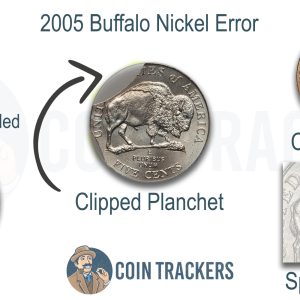
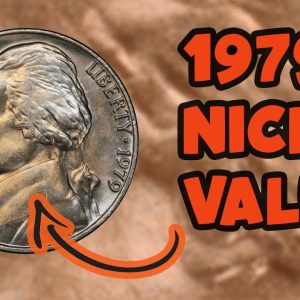
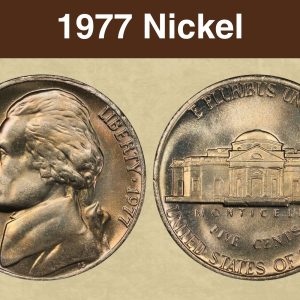
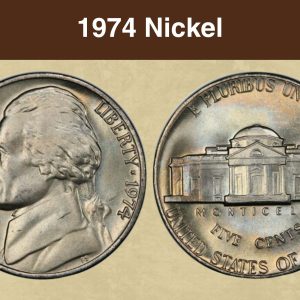
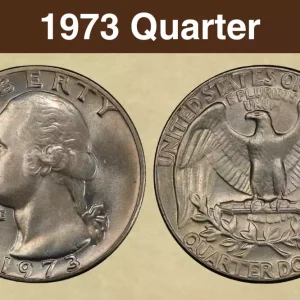
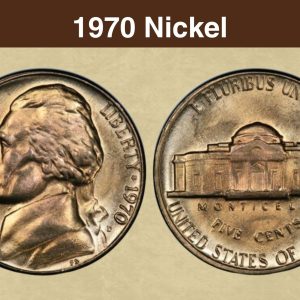
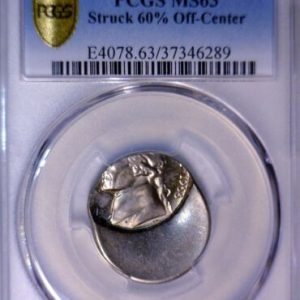
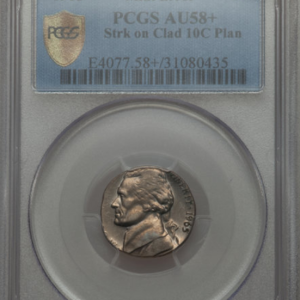
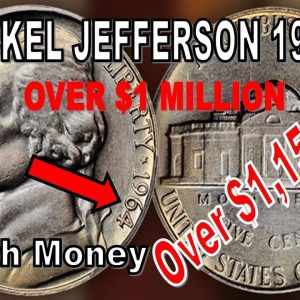
Is a 1942 nickel with no mint mark worth anything?
Condition is key: The value depends heavily on the coin’s condition. In circulated, average condition, it’s worth only a few cents more than its face value. Uncirculated value: An uncirculated version is worth more, with values ranging from approximately $3.00 to $15.00, though exceptionally nice examples can be worth even more. Mint mark difference: The key distinction is the absence of a mint mark on the reverse (back) of the coin. A 1942 nickel with a large “P” mint mark is a Type 2 silver…
What is the error on the 1942 D nickel?
The 1942-D over Horizontal D Jefferson Nickel is a result of a Mint employee punching the mint mark in the wrong position on the working die. Up until late in 1989, the Mint employee would hand punch the mint mark on to the working die, and this would often result with the mint mark being struck the wrong way.
What’s a 1942 S nickel worth?
A 1942-S nickel’s value depends on its condition, ranging from about $1.25 to $3.75 for circulated coins to up to $800 or more for uncirculated examples. These nickels are “wartime” nickels made of a 35% silver alloy, which adds some value beyond the 1942 Philadelphia and Denver mint marks without a mint mark, notes Gainesville Coins and Bullion Shark. For a very high-grade coin, the auction record is over $2,600, according to PCGS.
What nickel error to look for?
Key nickel errors to look for include doubled dies, where design elements are doubled due to die strikes, off-center strikes, where the coin is struck outside its intended position, and mint mark errors, such as doubled or missing mint marks. Other valuable errors are speared bison on 2005 nickels, the 1943 double die Jefferson nickel, and 1937-D Buffalo nickel three legs.